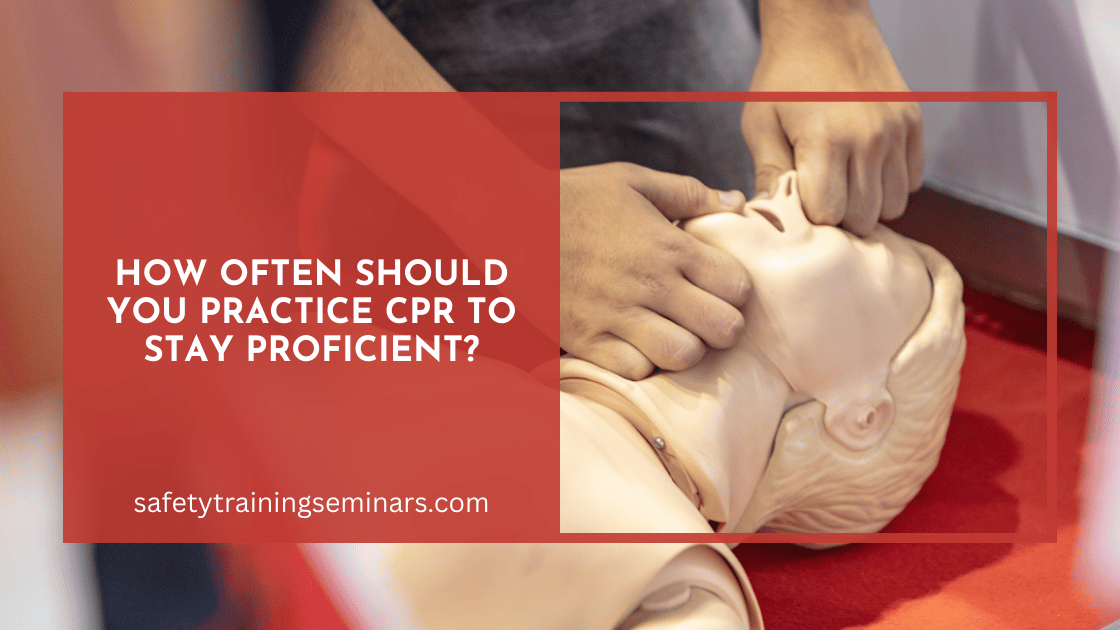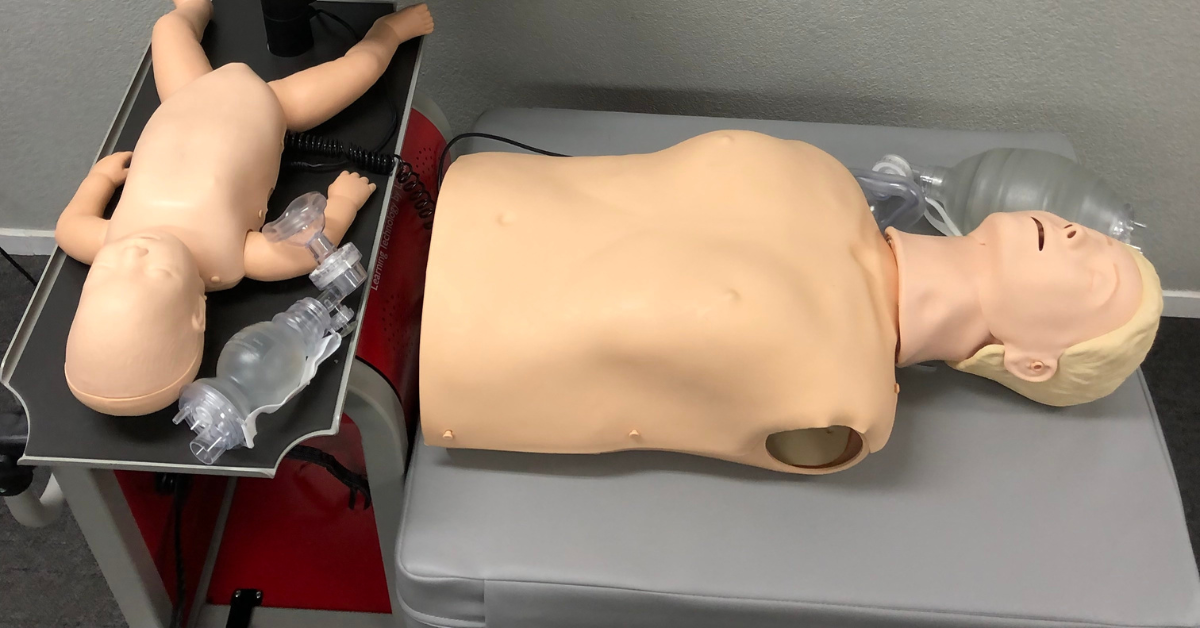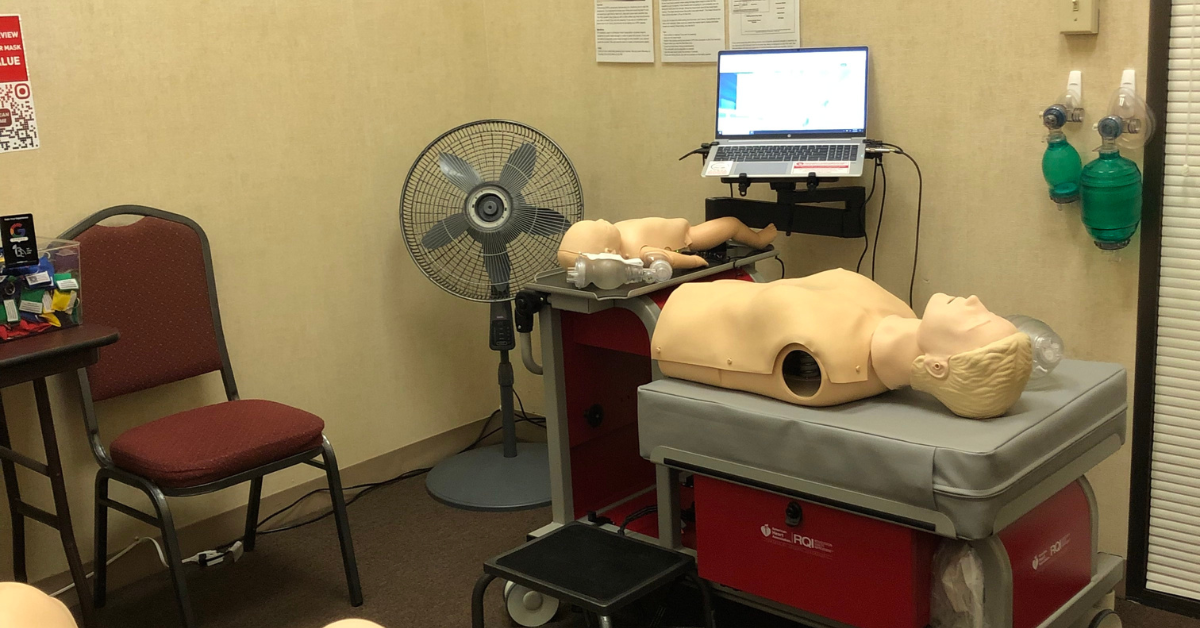CPR proficiency requires consistent practice every 3-6 months to maintain muscle memory and confidence during emergencies. While your official certification card lasts two years, research shows that CPR skills begin to decline within just months of initial training without regular refresher practice.
The American Heart Association recommends more frequent hands-on practice than many people realize. Your ability to perform effective chest compressions and rescue breathing can mean the difference between life and death for someone experiencing cardiac arrest. Yet most people only think about CPR when their certification expires.
At Safety Training Seminars, we’ve trained thousands of medical professionals and community members since 1989. We’ve seen firsthand how regular practice builds the confidence needed to act swiftly in emergency situations. Our students often ask us about the ideal practice frequency, and the answer might surprise you.
Why CPR Skills Fade Without Practice
Muscle memory forms the foundation of effective CPR. When you learn proper chest compression depth (at least 2 inches for adults) and rate (100-120 compressions per minute), your hands and body develop automatic responses. Without practice, these motor skills deteriorate rapidly.
Studies show that CPR skill retention drops significantly within 6 months of initial training. Healthcare workers who don’t regularly perform CPR in their jobs experience the steepest decline. Even experienced medical professionals benefit from quarterly practice sessions.
The psychological aspect matters equally. Confidence during emergencies comes from repeated practice. When someone collapses, you need to act without hesitation. Regular training builds the mental preparedness required to start CPR immediately rather than freezing under pressure.
Recommended Practice Frequency by Profession
Healthcare Professionals
Medical professionals should practice CPR skills every 3 months minimum. Nurses, doctors, and EMTs who regularly encounter cardiac emergencies might maintain proficiency longer, but even they benefit from structured practice sessions.
We recommend healthcare workers supplement their required biennial certification with quarterly skills sessions. Our BLS courses include team dynamics training, which requires regular reinforcement to stay sharp.
Teachers and Childcare Providers
School staff and childcare workers should practice every 4-6 months. Children require modified CPR techniques, and the emotional stress of performing CPR on a child makes regular practice even more crucial.
California childcare providers must maintain current CPR certification, but we encourage monthly mini-sessions focusing on pediatric-specific techniques. Our Pediatric CPR and First Aid courses specifically address these unique requirements.
General Public
Community members should refresh their CPR skills every 6 months maximum. If you learned CPR for personal knowledge or workplace requirements, don’t wait until your card expires to practice again.
Consider joining practice groups or attending refresher sessions quarterly. Our Heartsaver CPR and First Aid courses welcome participants who want additional practice between certification cycles.
Signs You Need Immediate CPR Refresher Training
Several warning signs indicate your CPR skills need immediate attention:
Physical Technique Issues: If you can’t remember proper hand placement or struggle with compression depth, schedule practice immediately. Ineffective compressions provide little benefit to cardiac arrest victims.
Timing Problems: CPR requires specific timing for compressions and rescue breaths. If you’ve forgotten the 30:2 ratio for adult CPR or can’t maintain proper compression rates, you need refresher training.
Equipment Unfamiliarity: Modern AEDs (Automated External Defibrillators) are user-friendly, but familiarity breeds confidence. If you haven’t used an AED trainer recently, practice with current models.
Scenario Confusion: Different age groups require different approaches. Infant CPR differs significantly from adult techniques. If you mix up procedures between adults, children, and infants, immediate retraining is essential.
Making CPR Practice Convenient and Effective
Use Technology to Your Advantage
Modern CPR training incorporates advanced technology that makes practice more effective and accessible. The American Heart Association’s RQI (Resuscitation Quality Improvement) program offers Voice-Assisted Manikin (VAM) technology that provides real-time feedback during practice.
We use RQI stations at Safety Training Seminars because they deliver precise feedback on compression depth, rate, and hand placement. This technology identifies skill gaps that traditional manikins might miss. You can rent or lease RQI stations for regular practice at your workplace or organization.
Create Practice Schedules
Consistency matters more than lengthy practice sessions. Fifteen-minute monthly sessions often prove more effective than marathon yearly reviews. Schedule CPR practice like any important appointment.
Healthcare facilities benefit from implementing mandatory quarterly skills checks. We help organizations develop sustainable practice schedules that fit their staffing and budget constraints.
Group Practice Benefits
Practicing with others improves team dynamics and builds confidence. Healthcare teams especially benefit from practicing together since real emergencies require coordinated responses.
We offer group training sessions for organizations wanting to maintain team proficiency. These sessions focus on communication, role assignments, and seamless transitions between team members during extended resuscitation efforts.
The Cost of Inadequate CPR Training
Poor CPR technique wastes precious time during emergencies. Shallow compressions fail to generate adequate blood flow to vital organs. Incorrect hand placement can cause injuries without providing benefits.
Beyond individual skill concerns, liability issues affect healthcare facilities and organizations. Employees with expired or inadequate CPR training create potential legal exposures during emergency responses.
Regular practice protects both patients and practitioners. Well-trained individuals respond confidently and effectively, potentially saving lives while protecting themselves and their employers from liability concerns.
Our Approach to CPR Proficiency
At Safety Training Seminars, we believe CPR proficiency requires more than checking boxes every two years. Our comprehensive approach includes initial certification, regular practice opportunities, and advanced training options.
We offer daily classes throughout California at over 70 locations, making it convenient to maintain proficiency year-round. Our American Heart Association certification courses include BLS, ACLS, and PALS training for medical professionals, plus Heartsaver courses for community members.
Our RQI program provides the most advanced CPR training available. The Voice-Assisted Manikin technology offers immediate feedback on technique quality, ensuring you develop and maintain proper skills. Organizations can rent or lease RQI stations for ongoing practice between formal certification periods.
We guarantee the lowest prices in California and provide same-day certification cards. Our students receive their American Heart Association credentials immediately after successful completion rather than waiting weeks for processing.
Beyond Basic CPR: Advanced Life Support Training
CPR forms the foundation of emergency cardiac care, but advanced training enhances your ability to handle complex medical emergencies. Our ACLS (Advanced Cardiovascular Life Support) courses teach healthcare providers to manage cardiac arrest, stroke, and other cardiovascular emergencies.
PALS (Pediatric Advanced Life Support) training prepares medical professionals for pediatric emergencies requiring advanced interventions. These specialized courses require more frequent practice due to their complexity and the critical nature of pediatric emergencies.
The Neonatal Resuscitation Program (NRP) addresses the unique requirements of newborn resuscitation. This highly specialized training demands regular practice to maintain proficiency in techniques rarely used but critically important when needed.
Building a Culture of Preparedness
Regular CPR practice creates a culture of emergency preparedness within organizations and communities. When multiple people maintain current skills, the likelihood of effective emergency response increases dramatically.
We work with businesses, schools, and community groups to develop comprehensive emergency preparedness programs. These initiatives extend beyond individual certification to create systems ensuring rapid, coordinated responses to medical emergencies.
Consider implementing peer practice programs where certified individuals practice together regularly. This approach reinforces individual skills while building team confidence and coordination.
Take Action to Maintain Your CPR Proficiency
CPR skills save lives, but only when maintained through regular practice. Don’t wait until your certification expires to refresh your knowledge and technique. Every 3-6 months, dedicate time to practicing the skills that could make you someone’s hero.
Ready to enhance your CPR proficiency? Contact Safety Training Seminars to explore our training options, including RQI station rentals for ongoing practice. Our American Heart Association certified instructors provide expert guidance to help you maintain life-saving skills year-round.
Call us at 800-470-9026 or visit one of our 70+ California locations to schedule your next training session. Whether you need initial certification, refresher training, or advanced life support courses, we’re here to help you stay prepared for any emergency.




